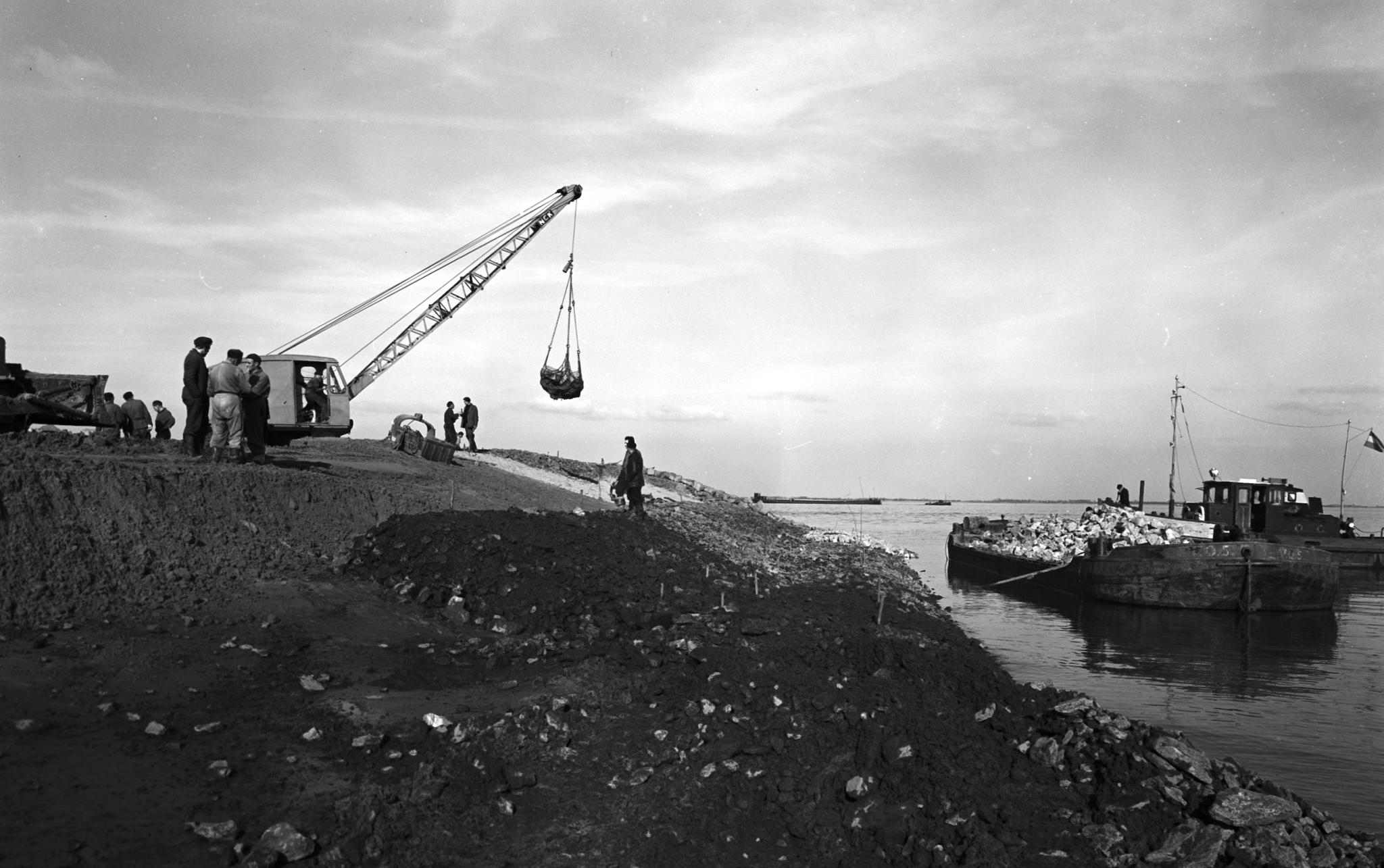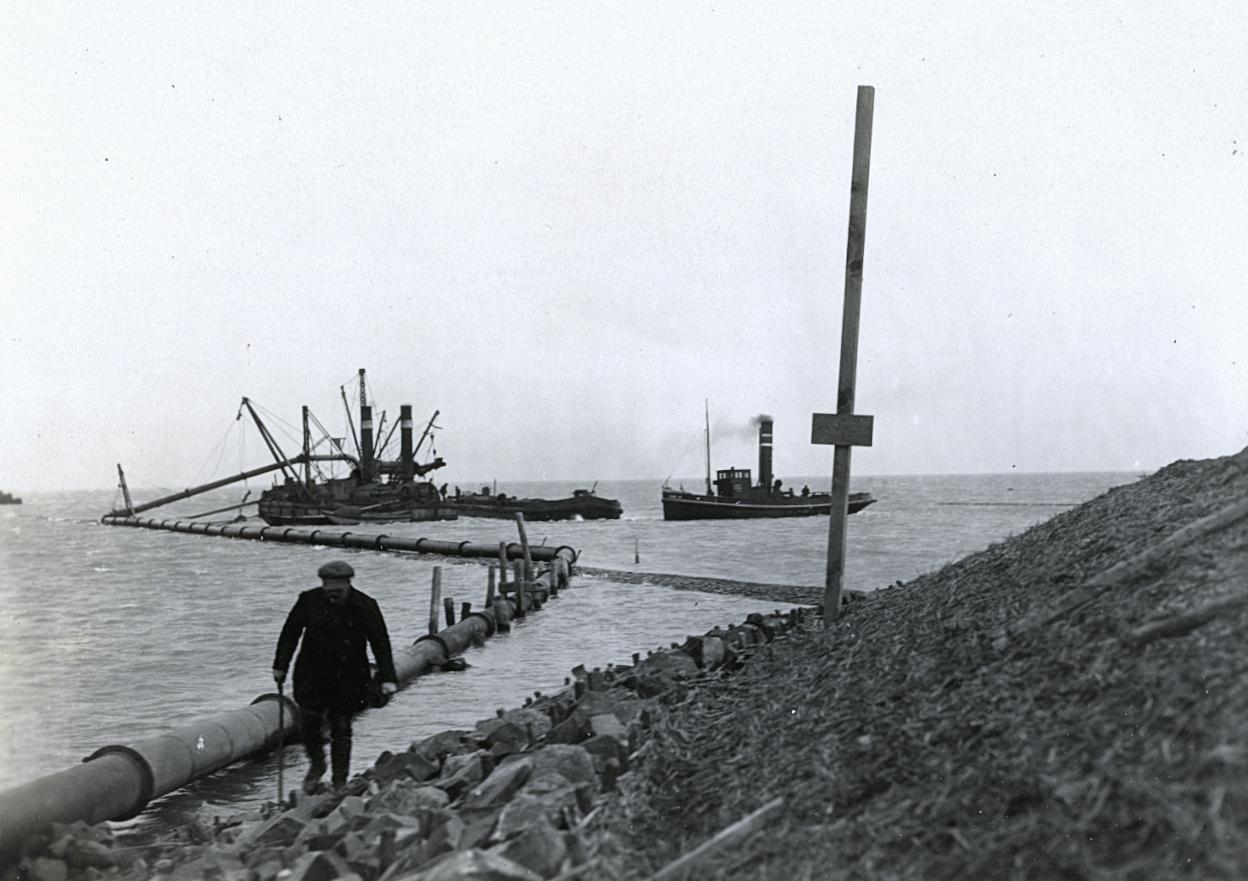Eric Berkers
Water heritage connects us with past challenges: it shows us how previous generations solved water related problems. It is the outcome of historic decision-making processes. By studying the heritage, we see the challenges, the agenda setting, the stakeholders interests, negotiations, underlying values, visions and believes from earlier times. Water heritage also connects us with today’s challenges. Choices made in the past still have their effects: there are path dependencies and lock-ins. On the other hand, former solutions can inspire engineers and policy makers. Dutch historians have studied historic decision-making processes in water management as part of contextual socio-technical research. Eric Berkers, researcher at the Foundation for the History of Technology (SHT) briefly presents a global periodization that this research has yielded so far. Finally, he argues that the perspective of the governance ecosystem can refine this picture and provide new insights.
Water management and technology have played a significant role in the emergence, expansion and contestation of the modern Netherlands, and historians of technology have devoted a great deal of attention to water management since about 1750 (e.g. Disco 1998, 2008; Ramakers 2008). This has resulted in a division into four periods. They defined the first period as the aristocratic-craftsmanship era. Many of the still existing hand-dug and lock-enabled canals from the early nineteenth century, such as the Noord-Hollands Kanaal and the Zuid-Willemsvaart, reflect the economic trade policy and the (almost) absolute power of Dutch King-merchant William I. He used the national agency of Rijkswaterstaat - founded in 1798 under Batavian-French rule - as his army corps of engineers to counterpart the de-centralized water boards and bring “unity and uniformity” in the nation’s water management, and also as a personal instrument for his economic-political goals.
Water related decision-making in the Netherlands changed mid-19th century as parliament gained power. Societal needs rose on the political agendas of the state, the provinces and the cities. Politicians, policy makers and engineers made plans to fight recurring river flooding that took lives and destroyed livelihoods, and to provide access to healthy drinking water. Armed with new technical means - including steam power and increased knowledge of water currents - engineers, now civilly trained, undertook work previously impossible. They dredged rivers on a large scale and forced them into a straitjacket, they moved estuaries were and systems of water pipes, and constructed sewage systems. The scale of waterworks took on unprecedented proportions, with the plans (partly realized) to dam and reclaim the Zuiderzee as a highlight of this democratic-mechanical period, that lasted from 1850-1920.

(Source: https://beeldbank.rws.nl, Rijkswaterstaat)
The period between the World Wars showed a strong intersection between science and technology. Mathematical and electronic models of water movements and flows became part of planning and water management. Scale models of waterworks provided insight into the behaviour of water. After the Second World War, water management was one of the first areas in the Netherlands for which the unprecedented calculating power of the computer was used. The Delta Works, a coherent system of flood defences, storm surge barriers and coastline shortening that was a result of the flood disaster of 1953, formed a flywheel for the use of probability calculations and scenario studies. In this technocratic-scientific period from the 1920s to the 1960s, society relied on science, technology and expertise of engineers in its relationship with water.
At the end of the 1960s, new values entered the water management domain. Nature conservationists criticized the civil engineers for their one-sided safety-approach to water and accused the engineers of insufficient attention to the consequences for nature and the environment of their interventions. “Ecologization” of Dutch Coastal engineering was a success because ecologists and civil engineers managed to combine their values, knowledge, skills and practices. The movable Oosterscheldekering is a good example of this ecological turn in Dutch water management that has subsequently been further fleshed out using concepts such as sustainability, nature-inclusiveness, and circularity. We could call this latest epoch the participative-multidisciplinary approach.
It seems interesting and relevant to compare this classification, created by technology historians, with a new research perspective on decision-making processes developed by scientists in the field of policy and technology. The Rathenau Institute (in 1986 established by the Dutch government to analyse the role of technology in society) introduced ecosystem thinking - which has gained popularity in many areas in recent years - in the field of political and administrative decision-making. The institute developed the notion of the governance ecosystem. Although it is intended to analyse contemporary decision-making processes, it seems well suited to use it as a lens for studying historical decision-making. The governance ecosystem sees decision-making not as a simple top-down act of politicians and policy makers but as a system of societal arrangements and processes of interactions and negotiations to put challenges on the agenda and find solutions. The system distinguishes four interacting domains: politics and policy, science and technology, the legal domain, and the social domain. All these domains bring in their knowledge, experiences, practices, power, cultures, values, and beliefs.

(Source: https://beeldbank.rws.nl, Rijkswaterstaat)
This governance ecosystem offers three promising ways to analyse the importance of water heritage for society. First, it connects heritage with historical narratives. The governance ecosystem perspective explicitly focusses on interactions between the domains and reveals - and makes it easier to interpret - conflicting issues and interests in water related decision-making. Analysing interactions (or the lack of interactions), the exchange of arguments and negotiations, enables us to understand better the underlying sets of values and beliefs, but also threats and fears and why certain choices were made and other options were dropped. It adds new elements to the stories behind water heritage.
Second, it enables us to compare and understand water-related decision-making in a transnational way, by studying differences in governance ecosystems of countries. We can answer questions like why the Netherlands chose certain (technical, organizational) solutions, while other countries opted for others. Furthermore, water challenges connect countries, nowadays and in the past. Countries exchange knowledge, experiences, practices and materials. A simple copy-paste strategy seldom works. Solutions must be made suitable for local and regional situations. This also requires knowledge of existing decision-making systems and the underlying values. So, the perspective also allows us to contribute to answer questions like why the export of Dutch hydraulic engineering expertise and practices was sometimes successful and sometimes a failure.
Third, it connects the past, current and future challenges. By identifying why and how choices were made in the past, we gain a better understanding of the relationship with today's challenges. We can answer questions such as: How successfully have we taken on challenges of the past? To what degree have our historic solutions created new challenges? How do path-dependencies and lock-ins influence current decision-making? This diagnosis of the past helps today's engineers and policy makers to come up with a broadly accepted therapy for today's challenges. Furthermore, opening up and identifying water heritage for a large public stimulates interest and participation in decision-making among various groups. Such an approach can help promote a healthy governance ecosystem for decision-making on current and future challenges.
Acknowledgement
The Blue Papers is a series of thought-provoking short essays on water. Authors have been invited by the platform Water Values: Connecting Past, Present & Future, an initiative of ICOMOS-NL, TU Delft and University of Groningen to argue the importance of heritage and a cultural approach within water related challenges. The papers were edited by PCF’s Carola Hein and Hilde Sennema. Eric Berkers is a senior researcher at the Foundation for the History of Technology (SHT), an institution of the 4 TU federation, based at Eindhoven University of Technology.
References
C. Disco. 2002. ‘Remaking “Nature”. The Ecological Turn in Dutch Water Management,’ in: Science, Technology & Human Values 27 (2002) no. 2, 206-235.
C. Disco a.o. 1998. ‘Waterstaat’, in: Techniek in Nederland in de twintigste eeuw, dl. 1 (Zutphen: Walburg Pers 1998), 53-207.
L. Kool, J. Timmer, L. Royakkers and R. van Est. 2017. Opwaarderen. Borgen van publieke waarden in de digitale samenleving (Den Haag: Rathenau Instituut). (With an explanation of the governance ecosystem).
H.W. Lintsen (red.). 1998. Twee eeuwen Rijkswaterstaat, 1798-1998 (Zaltbommel: Europese Bibliotheek 1998).
